Mark Farrow
Mark Farrow est le graphiste qui a réalisé la pochette de l’album.
Comment as-tu rencontré Jason Pierce ?
Discographie
SpiritualizedJason Pierce : J’ai rencontré Jason via quelqu’un de sa maison de disques qui pensait que nous allions bien travailler ensemble. Il avait raison : il y a 20 ans, nous avons effectivement commencé à travailler sur un nouvel album de Spiritualized.
Comment as-tu travaillé avec lui ? Qui a eu l’idée de faire ce packaging ?
Lors de notre toute première réunion, Jason a indiqué qu’il estimait que la musique était un médicament pour l’âme et cette remarque m’a vraiment marqué. Avant la fin de cette réunion, j’ai suggéré l’idée de faire un emballage de type médical et cette idée a marqué Jason. Il y a avait encore beaucoup de travail à fournir, mais le concept était presque instantané. Je me dois de préciser que je n’ai pas tous les jours d’aussi bonnes idées.
Quel est ton meilleur souvenir lié à ce projet ?
Tous les employés du label étaient derrière ce projet. C’est ce qui m’a le plus marqué. Ce n’est pas souvent le cas… Je pense que les gens ont vraiment compris le pouvoir du concept et à quel point le design se mariait à merveille avec la musique. Le budget normalement consacré à la publicité a été attribué à la production et à la fabrication de l’emballage, car les coûts de production étaient plus élevés que pour ceux d’un disque normal. Ils ont compris que ce packaging, sa musique et son design allaient attirer la presse et allaient générer leur propre publicité. C’est vraiment compliqué et difficile d’avoir une idée comme celle-ci, donc avoir tout le monde du même côté est a été d’une aide considérable.
Quelle est ta chanson préférée ?
Ma chanson préférée est le premier titre. Je suis tombé tout de suite sous le charme.
Spiritualized – Ladies And Gentlemen We Are Floating In Space
Darren Allison
Darren Allison est un producteur anglais qui a notamment travaillé avec Electronic et The Divine Comedy. Il a accompagné Jason Pierce pendant l’intégralité de l’enregistrement de ce disque. Pierce avait commencé à enregistrer l’album aux studios Moles.
Comment as-tu rencontré Jason Pierce et son groupe ?
Darren Allison : Lors de l’été 1995, je travaillais avec Neil Hannon. Je co-produisais avec lui l’album Casanova. C’était un projet ambitieux pour lequel nous avons travaillé dans différents studios. A la fin du mois d’août, nous avons réservé les studios Moles pour une session d’une semaine. J’ai tout d’abord rencontré Jan Brown, la studio manager. Jan était très emballée par notre travail. Elle était vraiment enthousiaste à propos de ce que nous faisions. Elle venait souvent nous voir car elle aimait bien notre créativité. J’ai fait une grande partie de l’enregistrement en dehors du studio alloué et de ses salles, j’utilisais d’autres parties du bâtiment, en général parce qu’il prêtait un bon type d’ambiance pour une partie, ou parfois pour un certain effet… Le salon, les escaliers et les couloirs ont été des lieux d’enregistrement et j’ai également mis des câbles de micros de l’autre côté de la rue vers le pub voisin, où nous étions. J’avais appris ce genre d’astuces avec Flood. Il m’a fait comprendre comment utiliser un studio comme un instrument. A la même époque, Jan parlait souvent de Jason et de son groupe. Ils avaient été dans le secteur et leurs nouvelles démos étaient visiblement prometteuses. Je rajouterai que Jan avait beaucoup d’affection et de respect pour Jason et son travail. Jan a commencé à suggérer que Jason et moi devions nous rencontrer au fur et à mesure de mon travail avec Neil Hannon. Elle m’a passé les premiers mixes de ses démos et c’était très prometteur. Je pense que Jan était convaincue que Jason et moi allions travailler ensemble alors que nous nous étions pas encore rencontrés. Jan et moi nous sommes restés en contact et, quelques temps après, j’ai reçu un coup de fil de Jason. Nous avons discuté à propos de la direction du disque et du contenu des bandes. Il a souligné qu’il avait besoin de travailler avec un ingénieur qui pourrait également produire, pour aider à accélérer le processus. Il voulait quelqu’un capable de prendre des décisions instantanées, capable de reconnaître une bonne prise quand elle était jouée et capable de réparer les bandes et de travailler en autonomie. Jason préférait rester dans la cabine à enregistrer ses parties vocales plutôt que de contrôler le travail des producteurs. J’ai alors dit à Jason que ce qu’il me décrivait était exactement la façon dont j’aimais travailler. Cette énergie et ce travail fait à la volée donnent un résultat plus vif. Ajouté à cela, qu’il y avait un réel potentiel, ici, pour devenir créatif avec l’enregistrement, et entreprendre une véritable aventure avec elle. J’ai donc dit à Jason que j’aimerais absolument être impliqué ! Nous avons donc eu l’avance du label, nous nous sommes de nouveau rencontrés et nous avons commencé à travailler ensemble à la fin de janvier 1996.
Où as-tu enregistré ce disque ? Comment as-tu trouvé ce son ?
The Church Studio – session#1
En discutant avec Jan, quelques mois plus tôt, j’avais proposé que nous travaillions aux studios The Church. Il s’agissait des studios d’Eurythmics et ils se trouvaient dans le nord de Londres. Je connaissais bien les lieux car j’y vais travaillé comme ingénieur au début des années 90. La salle du premier étage, avec son plafond très élevé et ses immenses vitraux, est un environnement qui favorise l’inspiration. Acoustiquement, il y avait une ambiance de son très lourde, longue et dense, que nous avons essayé de contrôler en disposant des tapis et en utilisant des écrans acoustiques. Mais compte tenu de la nature du projet, cette salle était un lieu génial qui permettait de faire un mur de son à la Phil Spector. Nous nous sommes concentrés sur l’exploitation de l’ambiance naturelle de la salle – plutôt que de le combattre – car cela allait rendre les choses magiques. Je pensais que cette approche serait parfaite pour ce disque car les démos faites aux studios The Moles avaient été faites dans de petites salles. Et malgré cette petite taille, elles sonnaient très bien. Je me suis dit que si on enregistrait les mêmes chansons dans un endroit plus grand, nous allions gagner en profondeur. Même si tous les éléments d’orchestre ont été doublés de manière séparée avec des micros placés de manière différente, il faut avoir à l’idée que l’ambiance naturelle est primordiale, qu’elle va imprégner le mix final et donner une couleur au disque. Come Together est un excellent exemple de cela, où les voix partagent le même espace que les chœurs et l’orchestre. J’ai capturé la voix de Jason avec deux types de micros placés là où la chorale était debout. Le résultat qui en découle a un énorme pouvoir.
https://www.youtube.com/watch?v=j9G7n8DBpO8
La pièce a donc eu une importance cruciale dans le mix final. Par exemple, le solo de trompette qui apparaît dans les derniers moments de Cop Shoot Cop en est une bonne preuve. Roddy a joué de la trompette à une extrémité de la salle, et j’ai placé le micro à l’autre extrémité de celle-ci. Nous avons fait des tests jusqu’à obtenir la bonne distance. Nous avons également eu l’option de deux cabines – une avec un arbre de levage – qui pouvait s’ouvrir dans la salle principale. Cela nous a fourni une énergie nouvelle. Le chant sur Electricity a été enregistré avec Jason debout dans la salle dédiée à la batterie, avec des micros branchés dans celle-ci et en dehors de celle-ci. Nous avions aussi deux grandes enceintes Tannoy dans le hall. On a diffusé dans le hall quelques parties enregistrées aux studios Moles. Je les ai gardées de côté pour le mix final.
Roundhouse Studios
Après avoir enregistré une grande partie du disque aux studios The Church, le label nous a envoyé aux studios Roundhouse. Ces derniers possédaient des cabines d’enregistrement plus petites et plus sèches. Après avoir évolué dans les grands studios de The Church, nous avons pu
réfléchir et regarder les choses de manière plus étroite. Un retour aux sources et aux origines pour ainsi dire… Il fallait de plus prendre certaines décisions. Nous nous sommes concentrés sur les chants les plus intimes de l’album. Broken Heart et Cool Waves ont bénéficié de traitements spéciaux. Dans les deux cas, les mélodies magnifiques (et innocentes) semblaient un peu méchantes lorsqu’elles étaient enregistrées de manière classique. De tels micros ne rendent pas justice aux superbes paroles de Jason. Donc pour Broken Heart, j’ai pris une petite tasse en plastique de la fontaine à eau du bureau dans laquelle j’ai fait un trou pour y introduire un micro crayon. Jason chanta doucement dans la tasse. L’ambiance sonore de la pièce avait soudainement été réduit à la taille de la tasse, ce qui donne un effet très intime, le plastique résonnant avec son souffle. Maintenant, nous pouvions vraiment ressentir l’émotion, et ça sonnait merveilleusement bien dans la salle de contrôle.
Spiritualized – Broken Heart
Quand est venu le temps d’enregistrer Cool Waves, j’ai demandé à deux amis de venir. Il s’agit de Clive Painter et de Martine Roberts du groupe Broken Dog. Ils sont venus avec leur micro Shure appelé Green Bullet. Ils l’avaient utilisé sur leurs disques et l’effet sur la voix de Martine était réussi. Ils l’avaient couplé à un curieux effet de guitare obtenu grâce à une pédale Stone. Le micro Green Bullet a été conçu à l’origine pour être branché sur un amplificateur de guitare, mais je ne voulais pas que la voix de Jason passe par ce type d’ampli. Je voulais seulement le caractère du micro, lui-même – donc la pédale comme un pont permettant de connecter le micro directement à la table de mixage. D’où ce son unique…
Rooster Studio – session#1
Nous nous sommmes ensuite rendus dans un studio aux frais de fonctionnement moins élevés mais somme toute charmant dans l’ouest de Londres et qui s’appelait le studio Rooster. J’ai choisi cet endroit parce qu’il disposait du système Otari RADAR, que j’avais largement utilisé pour le disque de The Divine Comedy. Le RADAR était un système multi-pistes numérique révolutionnaire, qui permettait, pour la première fois, la manipulation numérique du matériel multidirectionnel. Il fallait une bonne oreille et faire un peu de mathématiques pour calculer où étaient les lignes de la barre, mais cela signifiait que des groupes entiers de pistes pouvaient être édités simultanément. Le système RADAR nous a donné une grande liberté sans sacrifier la qualité des enregistrements.
The Church Studio – session#2
Nous sommes retournés aux studios The Church pour une paire de jours pour enregistrer quelques chansons qui avaient besoin d’une ambiance plus dense. Je me rappelle qu’Angel Corpus Christi est venue faire un tour et nous avons joué quelques titres somptueux dans le hall. Jason a branché son ampli Vox Starstream quand nous étions là et a rajouté quelques effets avec. Je suppose qu’il tentait d’améliorer quelques morceaux enregistrés lors des sessions faites aux studios The Moles. Je pense à des morceaux comme Come Together et Cop Shoot Cop. J’ai également passé un peu de temps à faire les premiers mixs des premiers morceaux que nous avions enregistrés car j’ai dû partir pour travailler avec les Blockheads et Clint Bradley (pour l’album This Hour). Grâce à ça, Jason avait la capacité d’écouter les premiers mixes car il était enfin de retour chez lui.
Rooster Studio #2
Nous nous sommes retrouvés dans le studio 2 à Abbey Road, pour notre première tentative d’enregistrement des cordes puis nous sommes retournés aux studios Rooster pour finir certains chœurs et certaines harmonies. Nous avons profité de l’occasion pour finir quelques travaux d’édition et travailler sur le système RADAR.
Olympic Studio 1
Lorsque nous étions prêts à reprendre le travail sur les parties du Balanescu Strinq Quartet, les studios The Church et ceux d’Abbey Road n’étaient pas disponibles. J’ai demandé au label de nous réserver l’Olympic Studio 1. Ce studio avait hébergé les Stones, Hendrix, Zeppelin, Scott Walker et beaucoup d’autre. Mais la décoration avait changé. Et de manière significative ! Ils avaient installé des déflecteurs cylindriques rotatifs montés dans les murs. Chaque déflecteur avait un côté réfléchissant brillant et un côté de tissu absorbant le son. On pouvait donc modifier le studio comme on le voulait. Pour chaque chanson, j’ai eu une certaine souplesse pour régler le son des cordes, pour compléter l’ambiance globale de la chanson. Le son de The Church Studio a eu un grand impact sur de nombreuses chansons, alors que
D’autres encore étaient dominés par le bruit des sessions faites aux studios The Moles.
Jason à Memphis
Une fois que nous avons terminé notre travail les cordes et après une courte pause, Jason est parti aux États-Unis pour travailler avec Mac Rebennack, alias Dr. John pour enregistrer le piano de Cop Shoot Cop. Mac a beaucoup aimé le morceau et a décidé de chanter dessus. Cela m’a fait plaisir car je suis un grand fan de Dr. John. Puis, Jason est allé à Memphis pour mixer l’album dans un studio classique de bonne facture mais cela n’a pas fonctionné. Jason m’a téléphoné pour me demander si je pouvais prendre le prochain avion pour Memphis, et aller à faire le mix avec lui. Malheureusement, je ne pouvais pas parce que j’étais déjà bloqué aux Jacobs Studios, dans le fin fonds du Surrey, pour terminer l’album de Clint Bradley.
Strongroom Studio 1
Jason est revenu en Angleterre avec les bandes et nous nous sommes retrouvés dans le studio 1 des studios Strongroom. J’ai choisi ce studio car il possède une console de mixage Neve VR60 et elle permet de faire une kyrielle d’effets dont nous avions besoin. Je pensais que cette console était vraiment adaptée à la musique de Spiritualized. Elle avait des transformateurs assez doux et des égaliseurs « sonores » qui allaient être d’une aide formidable pour essayer d’affiner certaines couches denses de guitares et de batterie des sessions Moles. Lors du mix, j’aime généralement commencer par des chansons complexes qui contiennent le plus d’éléments, afin que nous puissions construire rapidement une image des traitements qui fonctionnent avec chacun des instruments individuels utilisés tout au long du disque. Nous avons commencé par Come together, Electricity, I Think I’m in Love, All of My Thoughts et Cool Wave. C’est assez habituel d’avoir quelques références à portée de main, c’est-à-dire d’autres albums similaires – de sorte que, de temps en temps, tu peux faire une pause et écouter quelque chose d’autre, juste pour garder la perspective.
Cependant, Spiritualized a un son totalement unique et notre seule référence était Pure Phase. L’écriture de Jason, ainsi que l’ampleur des arrangements, avaient eu le temps de mûrir et étaient d’une grande qualité comme sur certains titres de Pure Phase. Les morceaux de ce disque sont d’une qualité exceptionnelle et possède un spectre stéréo large. Jason avait le désir de conserver cette qualité pour les mixs des nouveaux morceaux. En écoutant davantage, en particulier le morceau Good Times, je me suis rendu compte qu’il se passait quelque chose d’étrange comme des changements de variables entre les enceintes gauche et droite. Jason m’a expliqué comment ces chansons avaient réellement été mixées deux fois par différentes personnes et comment elles avaient été assemblées de manière digitale. Certains te diront que c’est un non sens technique. Le mix final est issu de deux machines à bande, qui évolueront naturellement hors du temps, puisque chaque machine est différente et la vitesse de leurs bandes fluctue légèrement. Il n’y a pas de mix : tu as seulement une enceinte gauche autonome et une enceinte droite indépendante et rien ne les relie. Tu crois qu’il y a un milieu, mais c’est une illusion ! Jason avait évidemment travaillé dur pour essayer de garder ces cibles mobiles en même temps que Le plus proche possible, en modifiant toutes les barres sur le bon canal, pour amener les deux pistes au même niveau. La vérité est que tu ne peux jamais atteindre la perfection ultime. Mais cette zone qui frôle la perfection est l’endroit où commence la magie. Plus elles sont proches plus est apparente cette sensation d’un « milieu ». Nous avons couplé ce son progressif aux mouvements fantômes dans le champ stéréo. Bien que cela semble très simple à faire, ce fut un travail fastidieux. Mais cela en vaut la peine, car le résultat final peut être totalement génial. Le seul compromis est que cette approche mixte peut faire perdre une partie du « coup de poing » des premiers mixes.
Ce ne fut pas le cas sur les parties plus légères du disque. Cela est devenu un véritable défi pour mixer les nouvelles chansons. J’ai rapidement compris que nous ne pourrions pas obtenir un tel résultat avec un seul mix! Notre machine à bande multipiste ne pouvait pas se trouver dans deux endroits différents à la fois. Cela aurait été un peu paradoxal ! En réalité, la seule façon possible de le faire aurait été d’utiliser la méthode de post-production éprouvée de Jason, comme ils l’avaient fait sur Good Times, et pour cela, nous aurions besoin d’un deuxième mix. Comme beaucoup de chansons de Ladies and Gentlemen .. étaient très soul, j’ai personnellement senti que ce serait dommage de détruire les détails au sein de ces nouvelles chansons, en les soumettant à la méthode de mixage fractionné. Nous avons donc essayé de faire le maximum avec un seul mix. Je me suis concentré et j’ai tenté de donner une impression de largeur. J’ai rusé pour dépasser les limites des enceintes. J’ai fabriqué un micro pour garder le côté sauvage de certaines chansons. Après avoir fait tout un tas de mixes, Jason a fait venir John Leckie pour en faire un ou deux. Les mecs des Moles ont mis aussi un coup de couteau sur quelques morceaux. Mads a ainsi pu commencer le travail de post-production. À la fin, cependant, je ne pense que Come Together et I think I’m in love ont été soumis à un traitement de soufflage fractionné. Come Together a subi un lifting complet. C’était génial que Jason ait soulevé cette question de « mixage fractionné » car cela nous a permis d’associer des choses qu’on croyait impossible à associer. En fin de compte, la qualité spectrale de l’album résulte de cette lecture. Et, je dois dire, cela a certainement alimenté mon intérêt pour une certaine ambition liée au son. J’ai développé mes propres méthodes que tu peux entendre sur des albums ultérieurs que j’ai fait avec Efferklang (Parades), Amatorski (TBC) et Daisy Bell (Londres).
Ce fut un enregistrement facile ?
De manière générale, les choses se sont faites facilement. Disons que le disque était musicalement et techniquement difficile à faire, mais les sessions ont été détendues et se sont faites toutes seules. Quand tu travailles avec des gens talentueux comme The Kick Horns, The London Community Gospel Choir, The Balanescu Quartet ou BJ Cole… Tout se passe bien. Ils sont si expérimentés que tu arrives au résultat désiré sans trop communiquer. Nous avons seulement eu un faux départ. Il s’agissait de notre première session à Abbey Road où la personne en charge des arrangements n’a pas réussi à monter ensemble les différentes parties. Nous avons reçues des parties qui n’avaient aucun sens et qui semblaient incomplètes.
Je me rappelle être assis dans la salle live du Studio 2 avec Jason et le quatuor. Nous écoutions toutes les parties en identifiant ce qui pouvait fonctionner. Clare et Alex ont suggéré de nouveaux arrangements. Clare a pris les partitions et a en a écrit de nouveaux. Je ne me souviens pas d’aller n’importe où pour vérifier les nouveaux arrangements ! Lorsque nous nous sommes réunis, cette fois-ci aux Olympic Studios, les parties étaient travaillées magnifiquement. Sur le plan technique, nous avons rencontré notre premier défi lors des premières sessions aux studios The Church. En effet les cassettes n’avaient pas assez d’espace pour contenir tout ce que nous voulions enregistrer. J’en ai donc parlé au label, et nous avons pris la décision d’améliorer la session en passant au 48 pistes. Attention, cela ne signifie qu’une machine supplémentaire à 24 pistes a dû être achetée. Pour ne pas dépasser le budget, j’ai fait des sous-mixes de la bande maîtresse sur quelques pistes de la nouvelle bobine esclave(à des fins de surveillance), et je pourrais ensuite renvoyer la machine louée. Ensuite, nous avons enregistré de nouvelles pièces sur les pistes libres des bobines esclaves. Ainsi nous pu continuer à travailler dans des studios avec des 24 pistes… qui étaient moins chers. Je pense que l’accès au système RADAR nous a beaucoup aidé. Il a été utilisé à de nombreuses reprises et a été un sacré bonus.
Il nous a offert une puissance d’édition hallucinante pour l’époque.
Quels sont tes meilleurs souvenirs ?
Bien, sur un projet comme ça, tu as plusieurs moments marquants et ça dans plusieurs endroits. J’ai donc plusieurs bons souvenirs. D’autant plus que j’ai travaillé avec un orchestre, ce qui est quelque chose de très particulier. Parfois ce sont les choses les plus petites qui sont les plus marquantes. On s’est bien marré en essayant d’appuyer sur le bouton Roger à la fin de la chanson Ladies & Gentlemen et en enregistrant les coups de téléphone de Kate.
Nous, les gars de studio, avons tendance à être de véritables maniaques. J’ai failli faire une crise cardiaque quand l’ampli Vox Starstream a été sorti de son étui. Je n’en avais pas vu un seul en vrai pendant de nombreuses années, pas depuis 1978, à Rock City Music à Newcastle, où mon père et moi avions l’habitude d’aller quand j’étais gosse. Je me souviens d’être hypnotisé par cette chose, à l’époque… J’ai été très nostalgique dans utiliser un. Ecouter, pour la première fois, ce que Dr John avait joué fut aussi un grand moment qui m’a donné des frissons.
Mais le plus spectaculaire, pour moi, était quand les Kick Horns étaient là. Sur la chanson No God Only Religion, nous avions cette partie de clavier qui sonnait comme un faux son de corne et qui était joué à peu près – soit par Kate soit par Jason – en utilisant uniquement les deux index de chaque main. C’était destiné à servir de guide pour les Kick Horns, mais Jason voulait conserver le phrasé sauvage, alors il a demandé aux Kicks s’ils pouvaient copier cette partie, presque textuellement ! Simon des Kick Horns a travaillé avec un échantillon que j’avais réussi à isoler. Les Kick Horns sont revenus quelques jours plus tard, et Simon a fait ses parties sur No God Only Religion. Je ne pouvais pas croire ce que j’entendais. Il avait réussi à transcrire les consignes de Jason. L’ambiance dans le studio était dingue. Ils avaient réussi l’impossible.
https://www.youtube.com/watch?v=lE0lBbBNR1Q
C’était facile de travailler avec Jason Pierce et John Coxon ?
C’était un plaisir de travailler avec Jason. Je l’ai aimé immédiatement dès notre premier jour de travail aux studios The Church. Il était affable, sympathique, et les séances se sont bien déroulées. Nous étions très productifs. Une fois que nous entamions un rouleau, je pouvais être ferme et perfectionniste sur des choses comme la sensation, le timing et l’accord. Je le refaisais faire sans cesse ses parties jusqu’à l’obtention de la prise magique.
Un bon exemple est la section vocale du bloc d’ouverture sur I Think I’m In Love. Nous avons doublé la prise avec un micro à vanne. Puis nous avons cru bon de la doubler. Mais la deuxième prise ressemblait trop à la première. Nous avons donc fait une troisième prise en changeant de micro. Ce type de travail nécessite une précision fastidieuse. Jason n’a jamais faibli et ne s’est jamais fatigué de mes exigences. Il faut dire qu’il est très perfectionniste et cela m’a bien aidé.
Je n’ai vu John Coxon qu’à quelques reprises. Je me souviens qu’il venait nous voir quand nous étions aux studios The Church notamment pendant les mixs des parties qu’il avait enregistré au studios The Moles. Kate Radley est aussi venue avec son clavier Roland D20. Elle est aussi venue pour enregistrer son fameux « Ladies & Gentlemen » qu’elle a prononcé au téléphone.
Quelle est ta chanson préférée ?
C’est très, très difficile de répondre à cette question car l’album est un tout cohérent, un peu comparable au déroulement d’une journée. Il faut l’écouter dans son intégralité; comme un tout cohérent. C’est même essentiel pour comprendre ce disque et pour au final le ressentir. Mais OK, si tu me demandes de choisir, je vais choisir No God Only Religion. L’immédiateté de cette courte introduction, et son sens de l’anticipation, puis Bang ! … nous y sommes directement ! Je suis un grand fan de gars comme McCoy Tyner (c’est-à-dire « Horizon »), Donald Byrd (« Ethiopian Knights »), et Pharaoh Sanders, donc les interventions très jazzy des Kick Horns, au milieu de tout ce chaos électrique, sont parfaites pour moi. Ce morceau est également un point crucial de l’album. Après la douleur déchirante de The Individual et après les réflexions de Broken Heart, tu te retrouves faces aux réactions viscérales du narrateur. Tu ressens vraiment ce qu’il ressent.
Vous ne pouvez pas catégoriser ou – je crois – critiquer de la musique comme ça. Elle est intouchable. J’ai les mêmes sensations que quand j’écoute Hendrix en train de jouer Machine Gun au Fillmore East ; De la même manière, No God Only Religion semble transcender cela. C’est du même niveau qu’Altamont des Aphrodite’s Child ou les morcaux d’Amon Düül…
Andy Willsher
Andy Willsher est un photographe anglais qui a travaillé avec U2 et les Killers. Il a croisé la route des Spiritualized en 1997.
Comment as-tu rencontré Jason Pierce et son groupe ?
Andy Willsher : J’ai d’abord rencontré Jason sur le tournage du clip Come Together. Pour être honnête, je n’étais là que pour prendre des photos des coulisses et je n’ai pas parlé à Jason. Le clip disposait d’un très gros budget et il y avait beaucoup de pression pour faire avancer les choses. Le clip était filmé de manière analogique… Ce n’était pas donné.

C’était facile de travailler avec eux ?
Je les ai pris plusieurs fois en photographie. Une fois à l’Astoria et une autre fois au Phoenix Festival. Ils étaient fantastiques en concert et les visuels étaient d’enfer.
Tu as travaillé avec le groupe en 1997 et en 1998. Quels sont tes meilleurs souvenirs ?
J’ai rencontré une seule fois Jason. Et c’était pour prendre ces photographies. Cela c’est passé à Oslo en 1998 lors de la tournée du groupe. C’était très facile de travailler avec eux. Les photos de Jason ont été prises pendant les balances du groupe. Nous sommes restés à l’intérieur car il faisait très froid dehors. Pour être honnête, il n’a pas fait beaucoup d’efforts pour poser.
Quel matériel as-tu utilisé ?
C’était en 1998. J’ai dû utilisé un Canon T90 et une pellicule Ilford HP5 400 qui a été poussée à 800 ASA. J’ai toujours tout développé moi même. C’était formidable. Vous pouviez y passer des heures.
Quelle est ta chanson préférée ?
Ma chanson préférée est Ladies and Gentleman We are floating in space.
Spiritualized - Ladies And Gentlemen We Are Floating In Space
Ladies And Gentlemen We Are Floating In Space de Spiritualized a été édité par le label Dedicated et a été réédité par Sony.
- Ladies And Gentlemen We Are Floating In Space
- Come Together
- I Think I'm In Love
- All Of My Thoughts
- Stay With Me
- Electricity
- Home Of The Brave
- The Individual
- Broken Heart
- No God Only Religion
- Cool Waves
- Cop Shoot Cop…
Retrouvez les articles de la série [1997-2017] :
- Les Papas Fritas avaient sacrément la frite
- Les jolies idées d’Idha
- Le voyage immobile d’Autour de Lucie
- Les démons magiques de Michael Head
- Cool as the Dandy Warhols
English text
Mark Farrow
How did you meet Jason Pierce ?
I met Jason through somebody at his record company who felt that we would work well together. I guess they were right as 20 years on we are about to start on a new Spiritualized album.
How did you work with Jason Pierce ? How easy was the conception of this cover album ? Who have got the idea of a box of drugs ?
In our very first meeting Jason mentioned that he felt music was medication for the soul and this really resonated with me. Before the end of that meeting I suggested the idea of the medical packaging idea which really appealed Jason. Obviously, there was a great deal more work in taking the idea from being a notion in to a fully formed piece of physical packaging, but the concept was almost instant. I should obviously clarify that that isn’t always the case when one is trying to have ideas, we just got lucky that day…
What’s your best memory about this time ?
What I remember most about from around that project was just how much everybody within the record company wanted to make it happen. This isn’t very often the case, as you can imagine, but I think people really understood the power of the idea and how well it would sit with the music. Budget normally spent on advertising was allocated to the production and manufacture of the packaging, as it was obviously much more costly than producing a normal CD. They understood the idea that this package, music and design, would generate its own press and publicity and do a lot of the work normally done by advertising. Its really complicated and difficult to get an idea like this through, so having everyone on the same side is kind of critical.
What’s your favorite song of this album ?
My favourite song is the title track, I was sold instantly…
Darren Allison
Q1: How did you meet Jason Pierce and his band?
In the summer of ’95 I was working with Neil Hannon, co-producing our third Divine Comedy project together, the “Casanova” album. It was an ambitious project, for whi ch we’d been working in various studios. In late August, we booked into Moles Studios in Bath, for a week-long session, and that’s where I first met studio managerJan Brown. Jan was really excited about what we were doing; she’d often pop in, right when we were in the middle of doing something particularly off the wall, and she loved the creativity of it all. I was doing much of the recording outside of the studio’s allocated live rooms, and using other parts of the building, instead, usually because it lent the right kind of ambience for a part, or sometimes for a certain effect.. The lounge, stairwell and hallways were all pressed into action, and I also had mic cables strung across the street to the neighbouring pub, where we were staying. It was all just stuff that I’d picked up from working with producer Flood, who really turned me on to thatwhole ‘studio as an instrument’ vibe. At the same time, Jan would frequently mention Jason and the band, who’d been in and out recently, cutting Spiritualized demos, which were sounding promising. I could tell that Jan looked upon Jason with a great deal of affection and respect for what he was doing, musically. As the days went on, watching what I was doing with the Divine Comedy stuff, Jan began suggesting that Jason and I ought to meet each other. She played to me a few of his embryonic demo mixes, which were cool. I think the band were out on the road at that point, though, so we didn’t hook up then, but by the time Neil and I had completed our session at Moles, I think Jan was convinced that Jason and I should work together. Jan and I kept in touch and, some time later, I got the call from Jason. We chatted about the direction, about what he had on tape, so far, and he stressed how he needed to work with an engineer who could also produce, to help speed up the
process. He wanted someone who could make snap decisions, as he was performing, recognise a good take, and fix things in the moment, allowing him to stay out there on the mic, and work until a part was complete, rather than him laying down endless takes, and then having to re-enter the control room and wear the producers hat, while sifting through what he’d done. I told Jason that what he was describing was exactly how I like to work; that energy of working quickly together ‘on the fly’, it leads to an end result with more vitality. Added to that, there was a real potential, here, to get creative with the recording process, and go on a real adventure with it. So I told Jason that I’d absolutely love to
get involved! So we got the go ahead from the label, and finally met and started working together in late January 1996.
Where did you record the album? How did you find the ‘sound’ of the album ?
The Church Studio – session#1
In conversation with Jan, some months earlier, I’d suggested that we should work at The Church Studio, in North London (which was owned by the Eurythmics). I had been a staff engineer there, in the early ‘90s, and I knew the room very well. The large Church hall upstairs, with it’s very high ceiling and huge stained glass windows, was a truly inspiring environment. Acoustically, it was a very heavy, long and dense sounding ambience, that we staff were always trying to control by putting down large squares of carpet, and using sound absorbing screens. Nevertheless, I often used to imagine that, given the right kind of project, this hall would make a great Phil Spector-style ‘wall of sound’ venue; concentrating more on harnessing the natural ambience of the room – rather than fighting it – might be quite magical! I thought this approach would be perfect for the Spiritualized record, because the demos and core rhythm tracks had all been done in the little moles playing room, which, for it’s smaller size, was pretty live sounding – trashy, even – so adding to that the bigger glassy ambience of the Church’s Hall; I figured the two might tie together nicely, almost the same thing on two different scales. In practice it worked out great, and lent the kind of depth and ‘sense of occasion’ that we were looking for. Even though all of the orchestral elements were dubbed separately, with different microphone placements, the overriding natural ambience permeates the mix, and makes the whole thing gel, as one big performance. ‘Come Together’ is a great example of this, where even the lead vocal shares the same space as the choir and horns, with Jason being captured on both a close mic, and an
ambient mic, positioned over where the choir had stood. The resulting blend has tremendous power. We could play with it, too.. and use the room like you would use an effect on the final mix. For instance, that lonesome trumpet which appears in the final stretch of ‘Cop Shoot Cop’, was something that we knew we’d place deep in the background of the mix , so rather than record it traditionally, and then have to add artificial reverb later, I had Roddy play at one end of the hall, and I placed the mic at the other end, experimenting with the length between them, until the trumpet was the desired distance in the mix. The harmonics in the natural space gave a chilling effect, and so it was good to be able to commit that scene to tape, there and then. We also had the option of two booths – one with a lift shaft – which could open up into the main hall. They provided a different kind of energy. The lead vocals on ‘Electricity’ were done with Jason standing in the drum booth, with room mics heavily
compressing as you would with a drum kit, and an ambient mic setup outside the door, in the hall. Additionally, there were two large Tannoy speakers in the hall, and I recall feeding some selected parts of the close-miked guitars and stuff from Moles out into the hall,
to capture some ambience, in case it could be used later, on mixing, to help glue together the parts from the two studios, in the general picture.
Roundhouse Studios
Once we were done recording all the big stuff, at The Church, I had the label book some time for us at Roundhouse, which had smaller, drier recording booths. After the busy schedule of the Church sessions, we now had a chance to reflect, and look more closely at some of the source material from Moles. A lot of ideas had been put down there, which were still pending various decisions to be made. The main focus now, though, was on some of the more intimate vocals on the album. Two tracks that spring to mind are ‘Broken Heart’ and ‘Cool Waves’, both of which benefitted from special treatments. In both cases, being sung so softly, their beautiful, innocent melodies sounded a bit characterless when recorded cleanly on standard studio mics. Such mics weren’t doing justice to Jason’s great lyrics. So for ‘Broken Heart’ , I took a little plastic drinking cup, from the water fountain in the office, cut a small hole in the base, and pushed a condenser ‘pencil mic’ into it. Now, when Jason sung softly into the cup, the room ambience had suddenly been shrunk to the size of the cup, making a very intimate effect, with the plastic resonating with every quiver in the breath. Now we could really feel the emotion, and it sounded wonderful in the control room! When we came to do ‘Cool Waves’, I asked two friends of mine to drop by, Clive Painter and Martine Roberts, from the band ‘Broken Dog’. They brought down their Shure ‘green bullet’ mic, which they’d used, to great effect, on Martine’s vocals on their own records, coupled with a curious guitar effect called a ‘Stone’ pedal, which
was a simple valve preamp circuit. The green bullet was originally designed to be plugged into a guitar amplifier, but I didn’t want Jason’s voice to go through a guitar amp speaker on ‘Cool Waves’ – I only wanted the character of the mic, itself – so the stone pedal acted as a bridge allowing me to connect the mic directly to the mixingdesk, for that unique sound, which you hear in the verse sections of the song.
Rooster Studio – session#1
We moved on to a cost-effective, but charming little basement studio in West London called Rooster. I chose this place because they had a new state-of-the-art Otari RADAR system, which I’d used extensively for editing, on the previous Divine Comedy project. The RADAR was a revolutionary digital multi-track system, which allowed, for the first time, digital manipulation of multi-tracked material, much like our
modern pc-based Digital Audio Workstations, albeit without a mouse, just a clunky numerical keyboard and a timecode display. It required a good ear, and bit of maths to calculate where the bar lines were, but it did mean that whole groups of tracks could be edited simultaneously. So multi-miked, phase critical, stuff like drum kits, double tracked choir, pianos etc could be copy/pasted and moved around, while still
keeping all of the component tracks separate. Prior to the RADAR, these kind of jobs could only be done with precision, by using a midi sampler, and to do that, everything would have to be sub-mixed to stereo, because our samplers only had stereo inputs, and relatively poor quality ones, at that. So the RADAR was a breakthrough, allowing us the freedom to arrange the recorded parts without sacrificing audio quality, and while keeping the balance options open for the final mixdown. Since the album already had a layer of intentionally sampled and looped material, on things like ‘I Think I’m In Love’, I felt it was very important that the live stuff, on top, kept it’s live feel, no matter how much we edited it. In that sense, The RADAR was transparent – a very powerful machine, whose ‘processing’ was invisible to the
end listener. Rooster also had a lovely small recording area, and some great old valve mics, so Jason sang some more lead and backing vocal parts while we were there. I recorded him directly into the RADAR, and we could easily comp on that, before transferring the final edit back to the 24-track master tape.
The Church Studio – session#2
We returned to The Church for a couple of days to put down some more stuff which required that bigger ambience. I remember Angel Corpus Christi coming up with heraccordion, and playing some gorgeous tones out in the hall. Jason plugged in the Vox Starstream guitar while we were here, and put down some more ‘stutter effect’ takes on tracks which already contained bits of Starstream. I guess he was waslooking to improve upon some of his parts from the Moles session, on ‘Come Together’ and ‘Cop Shoot Cop’. I also spent a while doing some rough mixes of all the tracks we had done, since I needed to take a week out for a previously booked session across town with The Blockheads and Clint Bradley (for his ‘This Hour’ record). At least, Jason would be able to listen to all of these mixes of his songs, while he was back at home.
Rooster Studio #2
We met up again at Abbey Road studio 2, for our first attempt at recording the string parts for the album, and then moved back into Rooster Studio, to finish off some harmony and backing vocals. We took the opportunity to do some final bits of editing and arranging work on the RADAR, while we were in there.
Olympic Studio 1
When we were ready to resume working on the Balanescu String Quartet’s parts, neither The Church, nor Abbey Road, were available, so I asked the label to book us into Olympic Studio 1. This was the same room that had long ago hosted The Stones, Hendrix, Zeppelin, Scott Walker and the like, but the decor had changed, and significantly, they now had these rotating cylindrical baffles mounted in the walls.Each baffle hada shiny reflective side, and a sound absorbing fabric side. The room could therefore be altered to be reverberant, or dry-sounding, or somewhere in between. So with each individual song, I had some flexibility to tune the sound of the environment, around the strings, to compliment the overall ambience of the song. The sound of The Church Studio had made a big impact on many of the songs, while some others were still dominated by the sound of Moles, so these spinning baffles allowed us to set the tone accordingly.
Jason in Memphis
Once we had the string parts all done and tidied up, after a short break, Jason left for the States, scheduled to work with Mac Rebennack, aka Dr. John, to record his piano on ‘Cop Shoot Cop’. Mac loved the track so much, he decided to sing on it too
– much to my delight, as I’m a huge fan! Then, Jason went on to Memphis, to mix the album in what was a very nice, classic
studio, as he told me, but, unfortunately, it wasn’t working out, in terms of direction. Jason rang me to ask if I could get on the next plane to Memphis, and have a go at mixing the album, there. Unfortunately, I couldn’t because I was already booked into Jacobs Studio, down in Surrey, finishing off the Clint Bradley album.
Strongroom Studio 1
So Jason returned to England with the tapes, and a couple of weeks later we booked into the Strongroom studio 1. I chose this studio because it was based around a Neve VR60 mixing console, and it had all the kinds of effects and processors that we would need. I felt that, sonically, the Neve desk would really suit this music; it had sweet sounding audio transformers in it, and it had very precise, ‘musical-sounding’ equalisers, which would be a great aid in trying to fine-tune some definition into the dense layers of guitars and drums from the Moles sessions. When mixing, I usually like to start with complex songs which contain the most elements, so that we can we can quickly build up a picture of which types of treatments work with each of the individual instruments used throughout the record. We got stuck into tracks like ‘Come together’, ‘Electricity’, ‘’I Think I’m in Love’, ‘All of My Thoughts’, ‘Cool Waves’. Now, it is customary to have a few references on hand – i.e. other similar albums – so that, once in a while, you can take a break and listen to something else, just to
keep perspective. However, Spiritualized have such a unique sound, the only sensible point of reference that we had lying around was the previous album, “Pure Phase”. Jason’s writing, as well as the scale of the arrangements and his delivery, had all moved on a long way since the previous record, but there was one curious quality that a few tracks on ‘Pure Phase’ possessed. These tracks were in an unusually wide-sounding stereo picture. Jason became keen to retain that quality in the mixes of this new material. Listening further, particularly to the track “Good Times”, I realised that everything was subtly moving about randomly in the picture, due to continuously varying phase shifts between the left and right channels. Jason explained to me how these songs had actually been mixed twice, by different people, and then he had taken the Left channel of one guys mix, and the Right channel of the other guys mix, and assembled them on a stereo track in a digital post production session! This is technically a no-no, many would say, because the left and right have absolutely no relation to each other, whatsoever. They have originated from two different analog tape machines, which would naturally drift out of time, since every
machine is different, and tape speeds fluctuate slightly. You no longer have a mix, you only have an independent left and an independent right, both moving about in time, with nothing connecting them in the middle! It sounds like there is a middle, but
it’s an illusion! Jason had obviously worked hard to try to keep these moving targets matched as close as possible, by making edits every so many bars to the right channel, to bring the two tracks back into line again. The truth is, they can never achieve perfect lock,
but within this zone of ‘nearly perfect’ is where the magic begins; the closer they get, the more apparent is the sensation of a ‘middle’, coupled with a phasing sound, and the ghostly movements within the stereo field. Although quite straightforward to do, it
would have been tedious work, yet worth the effort, because the net result could be a profound and exciting effect. The only trade off is that this split-mix approach can lose some of the ‘punch’ of the original mixes, but on the spacey, blissed-out tracks, that wouldn’t have been too much of a concern. This became a real challenge for the mixing of the new material. It was immediately obvious to me that it was completely impossible to achieve that same result within the context of one mix, in real time, because it fundamentally required the simultaneous use of two separately created mixes, generated from two different tape machines, to achieve that sound! Our multitrack tape machine could not be in two places at once, so It was a bit of a paradox! In reality, the only possible way to do it, would be to use Jason’s tried and tested post-production method, as they’d done on ”Good Times”, and for that, we’d need a secondary set of mixes, created elsewhere. Since many of the songs for “Ladies and Gentlemen..” were such big soulful, performance-oriented pieces, I personally felt it might be a shame to destroy the detail within these new songs, by subjecting them to the split-mix method, and we worked really hard, instead, to try to generate as much spacial excitement within the confines of a single mix, as we could. I concentrated on trying to give an impression of width, sometimes going beyond the edges of the speakers, using various phase tricks to do so. I set up a microphone with a pair of headphones clamped to it; we could send selected instruments to and from it. The return signal, having gone through a small speaker, would contain more midrange frequencies than the original instrument track. When this was polarity-inverted and blended with the original signal, it was possible to detach, and move about in the stereo, only certain parts of an instruments tones. This was pretty wild, and it helped achieve separation, clarity, and excitement in dense tracks such as, ‘Electricity’ (still one of my favourite mixes!) . It was my best shot at trying to emulate the spacial extremities of the ‘splitmix’ method. After we’d done a whole bunch of mixes, Jason got John Leckie to do one or two, and then the guys back at Moles had a stab at a few, with Mads doing post production tweaks, after that. In the end, though, I think only ‘Come Together’, and ‘I Think I’m in Love’ were subject to the full blown split-mix treatment, and interestingly, on ‘Come Together’ the middle choir-and-handclaps breakdown section, is an edit back to the full stereo mix, cutting back to the split-mix again, when the band kicks back in. It was great that Jason brought up this ‘split-mix’ issue, though, because it spurred us on, into further sonic exploration, by making us reach to try and match the seemingly impossible. Ultimately, the album’s spectral quality is a result of this drive and, I have to say, it certainly fuelled my own ever-deepening interest in ambisonics, radio-phonics, and general phase trickery within the confines of a traditional stereo field – developing my own methods which can be heard on later albums that I did with Efterklang (“Parades”), Amatorski (“TBC”) and Daisy Bell (“London”), for example.
How easy was the recording process?
Generally it was really easy going, I suppose. I mean, it was a challenging record to do, both musically and technically, but the sessions were relaxed, and flowed smoothly. When you are working with such great, talented players as The Kick Horns, The London Community Gospel Choir, The Balanescu Quartet, BJ cole and the like, well, these people are so experienced that it doesn’t take long to communicate an idea
with them, and achieve the desired result. We only had one false start, that I can recall, which was our first string session at Abbey Road, where the original arranger mysteriously failed to show up. The individual parts had arrived, but were not making sense. They were out of sync, seemed incomplete, and were just not gelling at all. I recall sitting down on the floor in the Studio 2 live room, with Jason and the
quartet, all of us listening to the parts with, and without, the backing track, identifying phrases and motifs that might work, with Alex and Clare suggesting new lines. Then Clare took it home and, from her notes, scored her own new arrangement. I don’t recall us going anywhere to check the new string parts in rehearsal, as I usually would. I think we just trusted that Clare would come up with the goods, and
boy, she certainly did! When we re-convened, this time at Olympic Studios, the parts worked beautifully, and we were back to a smooth running session. On the technical front, we encountered our first challenge on the first day of our session at The Church Studio, which was that the tapes did not have enough free space available to accommodate the amount of stuff we were about to record. So I talked with the label, and we made the decision to upgrade the session to 48-track, meaning an extra 24-track machine had to be hired in. To keep a lid on the budget,
though, I made sub-mixes of the master tape onto a few tracks of the new ‘slave reels’ (for monitoring purposes), and I could then return the hired machine. From then on, we recorded new parts onto the the free tracks of the slave reels. This meant that we could continue working in cheaper 24-track spec’d studios. Eventually, on the mixing session, we would re-unite the master reels and slave reels, and run
the pairs of tapes on two synchronised 24-track machines. I think that having access to the RADAR system helped us a lot. It made comping
jobs, feel almost effortless, and was a great bonus! While a little cumbersome in operation, it afforded us a luxury of editing power that was on the cutting edge, at the time.
What were your best memories from this time?
Well, on a project like this, there are so many eventful scenes in different locations that you take away a lot of great memories, and, you know, working with a Choir is always going to be a particularly memorable thing! Sometimes it’s the smaller things, though..we had a good laugh trying to button the ‘roger’ bleep in the right places on the end of Jason’s original lines on ‘Ladies and Gents..’, and setting up Kate’s phone call from downstairs, was all good fun. We studio guys tend to be real ’gear-heads’, and my heart leapt when the Vox
Starstream came out of its case! I hadn’t seen one in the flesh for many years, not since 1978, back at ‘Rock City Music’ in Newcastle, where my Dad and I used to frequent, when I was a kid. I remember being mesmerised by this thing, back then, and so it felt both nostalgic, and very special, to finally be recording one of these! Although I didn’t make it to the States, later on at The Strongroom, putting the faders
up and listening, for the first time, to what Dr. John had added – well, that was a truly spine-tingling moment, I can tell you!
But the most spectacular one, for me, was when the Kick Horns were here. On the track “No God Only Religion”, we had this keyboard part on tape, a fake horn sound being played very roughly – by either Kate or Jason – just wildly jamming, using only the two index fingers of each hand, kinda emulating two monophonic horn players. It wasn’t tight, just real loose and sloppy in places, but with one hell of a vibe. it was
intended as a guide for real players, but Jason wanted to retain the wild phrasing, so he asked the Kicks if they could copy this part, almost verbatim! We did try, there and then, by playing a few bars at a time into their headphones, rolling the playback around a few times, so they could learn ‘on the fly’, and then I’d put it into record..grab that, then move onto the next phrase.. But it quickly became
evident that this could take forever, so instead, I made a few monitor mixes to give to Simon, with the keyboard part highlighted and isolated. He took those mixes away, in order to work on transcribing two parts. The Kick Horns returned, a couple of days later, and Simon produced from his case the two scored parts for “No God Only Religion”. I couldn’t believe what I was seeing; he’d pretty much transcribed the parts verbatim, with only a few concessions to avoid note clashes. I’d never seen so many weird semiquaver rests in a piece – even in my
younger days as an orchestral drummer, I’d encountered some pretty mad percussion scores, but nothing like this! It got even better, because these guys were now going to have to go out to the mics and actually play this, and y’know, they only went out and nailed it within a couple of takes! They naturally tripped up a couple of times, but Simon had took the precaution of printing a copy of the parts for me, so that I could drop into record, right in the middle of the mayhem, while following his mad score.. The vibe in the control room was just about as great as it got, on the whole album session. A truly remarkable afternoon!
It was easy to work with Jason Pierce and John Coxon?
It was a breeze working with Jason. I took a liking to him, immediately, on our first day at The Church. He was affable, likeable, and the sessions were chilled out, even though we were being very productive. Once we were on a roll, I could be a staunch perfectionist, with things like feel, timing and tuning, and I could sometimes put him through endless takes, and drop-ins, looking for ‘the one’, y’know, the magic take. A good example is the opening block vocal section on “I Think I’m in love”. Working with a valve mic, once we’d nailed the first vocal melody track, we thought doubletracking would sound good, but in this song’s case it needed to be very tight with the first track – almost a clone – so that it still felt like a singular vocal (it’s “my spike, my arm”, not “our spike”).That worked well, so I then asked Jason for a third track, so that we could pan the vocals left-centre-right, filling out the stereo space. It felt like we could take this idea even further, so replacing the valve mic with a modern B&K precision mic, we repeated the process until we had six unison voices, three on each
mic. On top of this base, we started figuring out and laying down harmony vocal lines, while still trying to keep it all as tight as possible. This kind of work requires tedious precision, but Jason could handle it. He was a real trouper, going at it with conviction, and he never got tired of me pushing for another take – I’ll always appreciate that. Jason was clearly a perfectionist too, and that, for me, was refreshing. I only saw John Coxon on a few occasions. I remember him coming up to see us
one time, while we were up The Church, and then later while we were mixing. John’s band ‘Spring Heel Jack’ had their own studio room within The Strongroom Studio complex, and so he popped in a few times to hear how it was going, and to checkout what we’d done with the guitar parts that he’d put down at Moles Studio, many months earlier. For the most part, the sessions I worked on were only attended by Jason and
myself, although Kate Radley was also present a fair few of the sessions at The Church Studio. She played her Roland D20 on some things and, famously, sat down in the Studio B lounge, calling to the control room phone, which I’d miked up and set to handsfree..”Ladies and Gentlemen…”.
What’s your favourite song of the album ?
It’s very, very difficult to answer that one since the album, as a whole, is a serious, sometimes overwrought, emotional journey, and the very shape of it’s running order is essential to understanding and feeling that. But OK, if you push me to pick out just one track, I’d say that, while most of these songs still knock me out individually, the aforementioned “No God Only Religion” gets me every time, in a big way. The immediacy of that short intro, and its sense of anticipation, and then bang!.. we’re straight into it! I’m a big fan of guys like McCoy Tyner (i.e.“Horizon”), Donald Byrd (“Ethiopian Knights”), and Pharaoh Sanders (i.e.“Red Black & Green” from ‘Thembe’), so the
urgent, jazzy intervals of the Kick Horns, amidst all the electric chaos, is very much my scene, indeed! This track is also a crux point in the album; after the wrenching pain of ‘The Individual’, and the reflective ‘Broken Heart’, you now get to the real gut reaction (of
the narrator), and at this point, you really feel for the guy.. You cannot categorise or – I believe – criticise music like that. It speaks on another level. I get the same feeling as I do when I listen to Hendrix doing ‘Machine Gun’ at the Fillmore East; in the same way, “No God Only Religion” seems to transcend its musical parts, and just screams out this feeling, like no words could ever convey. For
me, it’s up there alongside other greats like ‘Altamont’ from Aphrodite’s Child’s “666”album, or Amon Düül 2’s ‘Mozambique’, from ”Vive La Trance” (with its brilliant, extended coda!).
Andy Willsher
How did you meet Jason Pierce and his band ?
I first encountered Jason on the set of the video for Come Together which is the photo at the bottom of Jason being led away by the guards,
to be honest i was only there to take some behind-the-scenes images and didn’t really talk to Jason then – the music video was a pretty big budget one so there was a lot of pressure to get things right and back then everything was shot on film too so it was expensive to shoot.
It was easy to work with his band ?
I definitely remember shooting Spiritualised a couple of times in concert around then too – the Astoria and also The Phoenix Festival and they were amazing live, brilliant visuals too.
Your worked with this band in 1997/1998. What are your best memories ?
The only time i’ve proper met Jason was for the shoot that you’ve attached the 2 images of, those were taken in Oslo in 1998 when the band were touring, he was actually very easy to work with –
i didn’t have a great deal of time and we had to shoot in the venue as it was freezing outside but he was very cooperative and to be honest he doesn’t have to do a great deal to look good in front of the camera.
Thos images were indeed taken just after soundcheck at the venue.
What are your favorite songs of Ladies and Gentlemen ?
My favourite song is actually Ladies and Gentleman We Are Floating in Space with the Elvis section at the end, i was just checking the story behind it and supposedly it was released initially with that version and
then the publishers made them remove it and then the Presley Estate came in later and approved it.
Which camera did you use ? Which film ?
As far as cameras go…it was 1998 so i’d imagine i would have been using a Canon T90 and back then always used to use Ilford HP5 film and that was probably pushed from 400 up to 800 ISO.
I always developed my own film then and printed everything my hand too…it was a great process and you could spend hours trying to get the print just right.
What are the relationships of Jason with is own image ?
As far as Jason’s relationship with his own image goes, to be honest i don’t really know…he’s got a great track record of looking good though in photos so there’s probably quite a lot of thought gone in to them.
How was the mood in the band ?
From what i remember the mood was great within the band, the show we went to was amazing and there was a few drinks after the show and everyone was extremely sociable.
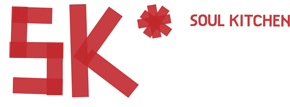
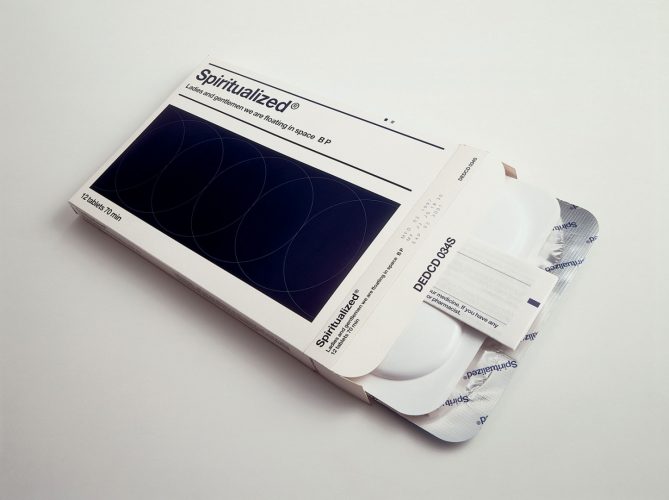
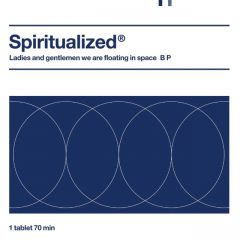
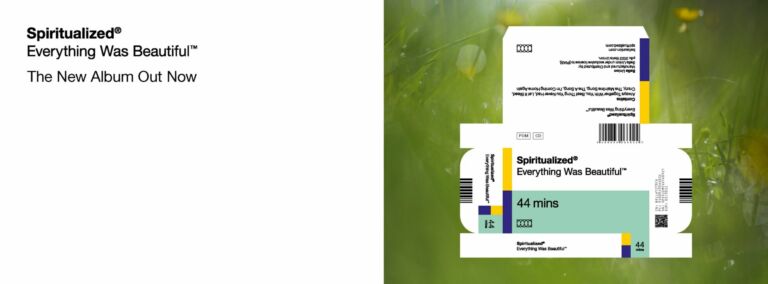
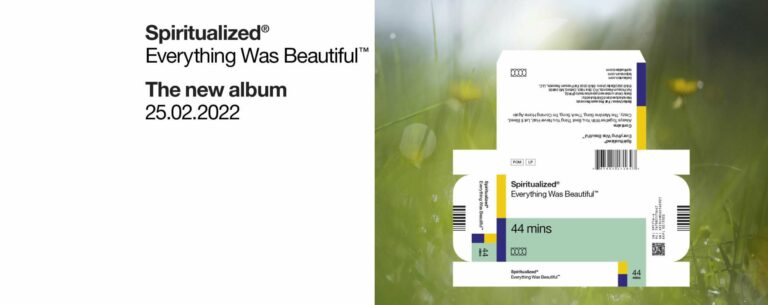

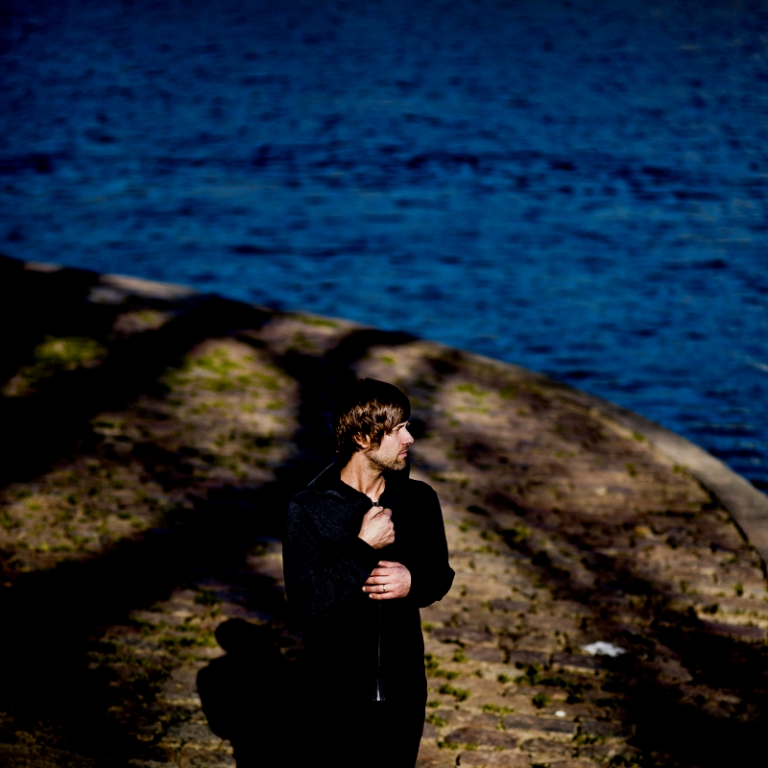
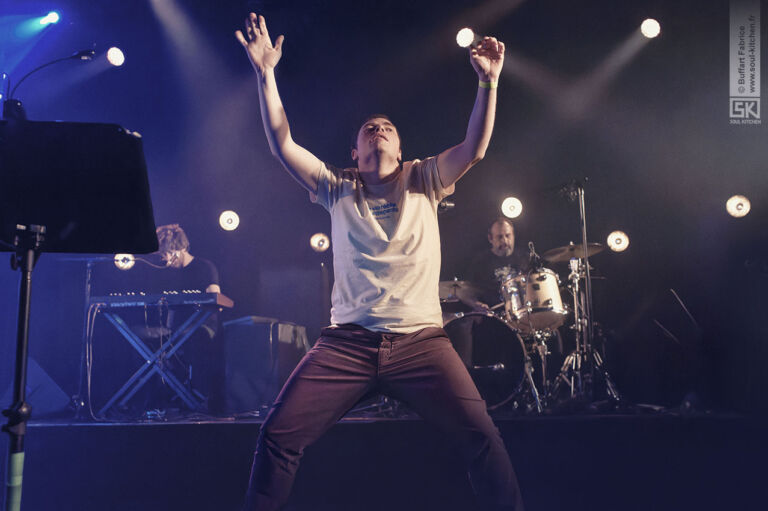
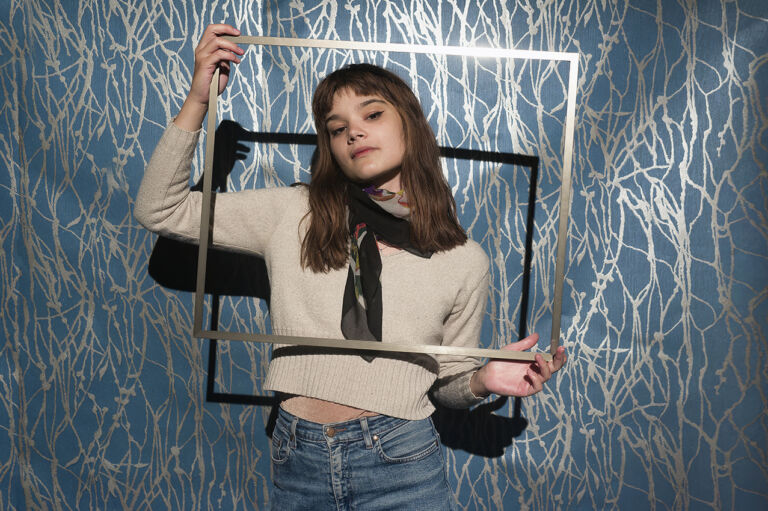
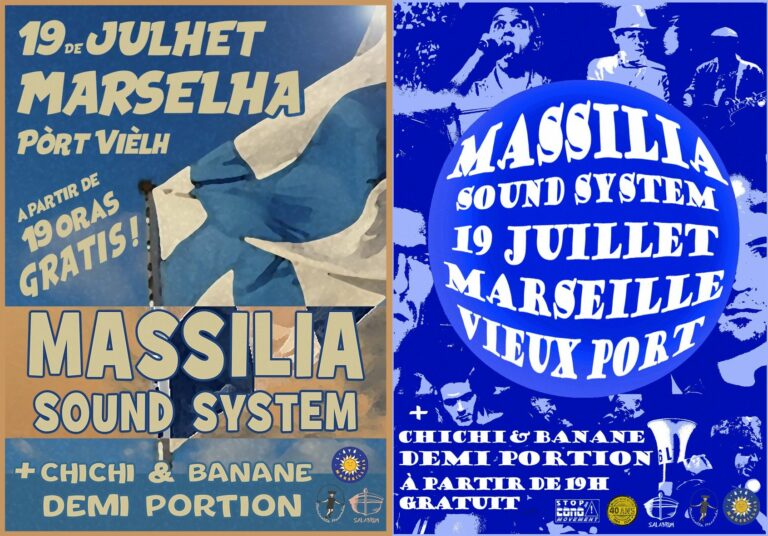
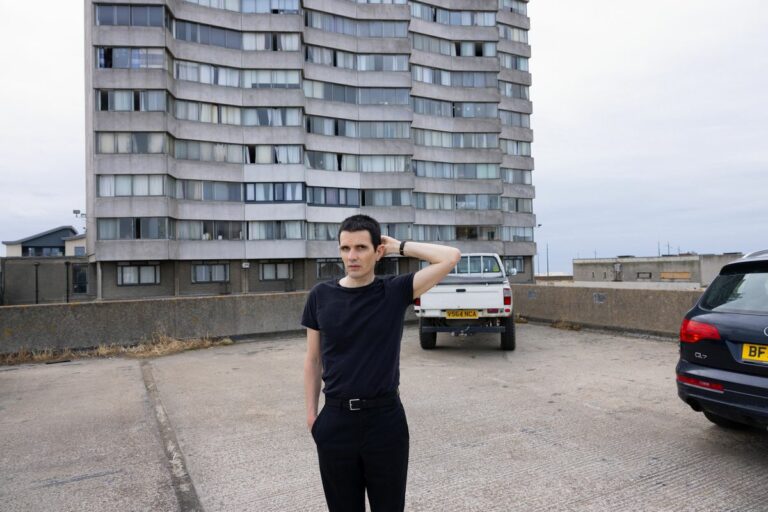
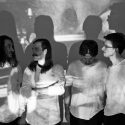 5 questions à … Goodwood Atoms
5 questions à … Goodwood Atoms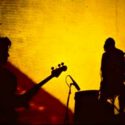 [1987-2017] La déclaration de Felt
[1987-2017] La déclaration de Felt